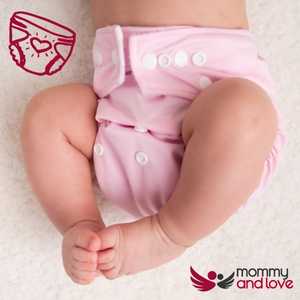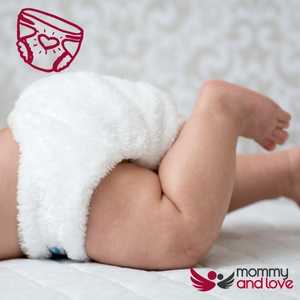Leaking nappies can enough of a pain during the day, but they’re even more inconvenient when you get woken up at 2am by a wide awake toddler because their clothes are wet. You find yourself bed changing and wondering what went wrong.
There are many reasons why your child might be experiencing leaking nappies, and it’s important to figure out what the cause is before trying any solutions. This blog post will help you understand what causes nappy leaking and how to stop the leaks effectively!
How do I Stop Nappies From Leaking Overnight?

Nappies can be a tricky business, and when your little one is waking up in the morning with dirty sheets and clothes, it can be hard to know what to do to ensure it doesn’t happen again.
But don’t worry, we’re here to help! Follow these simple steps for how to stop nappies from leaking at night time:
1) Change nappy regularly – once every three hours or more often if wet, immediately if soiled.
2) Make sure you’re using enough absorbency (check out our blog post on just how much!)
3) Ensure the nappy is well-fastened and fitted correctly
Both disposable nappies and cloth nappies can give issues with nappy leaking. However, it is easier to fix a baby’s nappy leak if its from reusable nappies; it’s a simple case of finding out the cause of the nappy leaks (absorbency or fit are usually to blame) and sorting that out.
Its actually harder to fix when a disposable nappy leaks because… well.. you can’t exactly add a nappy booster. You can try other disposable nappy brands or go up a size, but maybe its just time you embrace reusable!
Why does My Baby’s Diaper Leak at Night?
Diaper leaks at night can be particularly frustrating, so its important to get to the bottom of what is causing leaks. The good news is, wo have some really helpful guidance to help you with this.
Nappy leakage can be caused by any of the following reasons
Vests
If you use nappies with a vest they may leak. A vest which is two tight can place pressure on the diaper, essentially squeezing out moisture, also known as compression leaking. Using a vest extender will help reduce the pressure and reduce compression leaks.
You can also use vests in the next size up to prevent leaks of reusable nappies.
Absorbency
If your nappy doesn’t have the absorbency to match up to how much your little one wees, leaks are bound to happen. Remember, natural fibres such as organic cotton, hemp or bamboo tend to absorb a lot more.
Further more, microfibre, while it absorbs quickly, doesn’t absorb as much as other materials and is prone to compression leaking.
Many parents find that combining microfibre with bamboo or hemp gives the very best results.
Choose the Right Size of Diapers – Ensure Nappy Fits Snuggly

Disposable nappies are sized using weight ranges, and its generally very easy to get a good fit for your child by following the packet guidelines.
Newborn nappies even come with wetness indicators which will help you prevent leaks. Ensure that leg guards- the frilly bits- are out.
Cloth nappies can be a little less straight forward, and you may struggle to get a a good fit round baby’s legs even if you’re using birth to potty nappies. Getting a good fit with a cloth nappy depends a lot more on the size and shape of your baby than just the weight.
Once fitted snugly, run your finger around the legs and waist to ensure no gaps. Repeat this after all nappy changes.
Too small
Disposable diaper too small? The easy fix is to move to the next size up, simple!
If your baby has outgrown cloth newborn nappies, this is a great sign that your baby is ready for birth to potty nappies! If too small, baby’s nappy is likely to leave red marks under the waist band or round the legs.
Whether you use cloth or disposables, poo leaks or wee leaking on to clothes is more likely in a nappy that’s too small.
Is nappy too big?
If the current nappy size is too big, wee is likely to leak straight out of baby’s nappy. If you’re using cloth diapers, you might simply need to adjust the poppers to lower the rise of the nappy.
Next time you are changing baby’s nappy, run your finger around the leg cuffs and waist. You should have a snug fit with no gaps.
Add a booster

If baby’s nappy leak seems to be due to insufficient absorbency, you may need to add a booster. for a disposable nappy, you could add a sanitary towel to see if this stops the leak.
If using cloth, add an absorbent booster to baby’s nappy. If this stops any liquid leaking, you can assume that absorbency has been the issue.
Change your baby’s nappy just before bed
One of the best strategies to prevent liquid leaks overnight is to change your baby just before going to bed.
Not only is this more comfortable for baby, but it may help them go that bit longer before leaks occur.
Is it on correctly?
This tends to be a bigger issue for cloth nappies than disposable nappies. That’s because babies come in all different shapes! If you’re sure that the nappy is absorbent enough, fit is likely the issue.
Cloth nappies go on a little differently to disposables, so do be sure to take your time to learn how to correctly fit a nappy.
Why does my son’s diaper leak at night?
Having nap or night time wee leaks with your little boy? Do these leaks tend to appear around his tummy, above the waist band when he is sleeping?
An additional layer of absorbency won’t help here- you need to make sure that your little boy has his penis facing downward in the nappy, or wee will be directed straight up and out of the nappy, leaving him in soaked clothing and bedding. This is one of the most common reasons for sopping wet sheets at night, regardless of the nappy your infant is using.
What is a nappy strip wash?
Occasionally, cloth diapers will require strip washing- there can be a few reasons for this, including the use of certain nappy creams or a wash routine that hasn’t been working well.
A build up of fabric softener or laundry detergent can seriously impact the absorbency of your nappies, as well as causing irritation to your baby’s skin. If this is the problem, you need to also fix your washing routine, or the problem will keep re-ocurring.
There are a few ways you can go about stripping your nappies, with some parents putting nappies in a bath to soak overnight, and others simply giving the nappies a thorough wash in the machine, followed by a few rinses without powder to ensure no residue.
Try a different brand
Many parents find that one brand works much better for their child than others. Try out different brands to find out which one works best for your kids. If your current brand isn’t working, you should be able to find a nappy that fit snuggly and offers more absorbency.
The Bottom Line
Leaking diapers can be hugely frustrating, but rest assured that you will get to the bottom of it!
All babies have different needs, so it may be that the diaper brand that worked for your other babies doesn’t work for this one- don’t be afraid to try a different brand or nappy type!

This article was written by: Gian MIller – Full-Time Writer, Baby Whisperer & Dad of 3.
Gian spends a lot of his time writing. A self-proclaimed baby whisperer, Gian has been through it all with his own children and is passionate about sharing his hard-won wisdom with other parents. When he’s not writing or changing diapers, you can find him playing the guitar or watching baseball (or preferably both at the same time).




